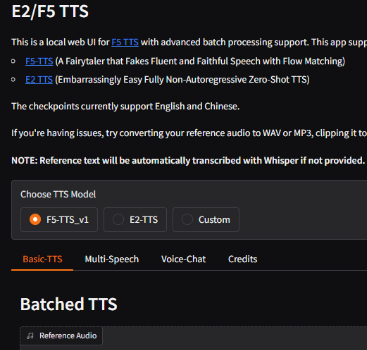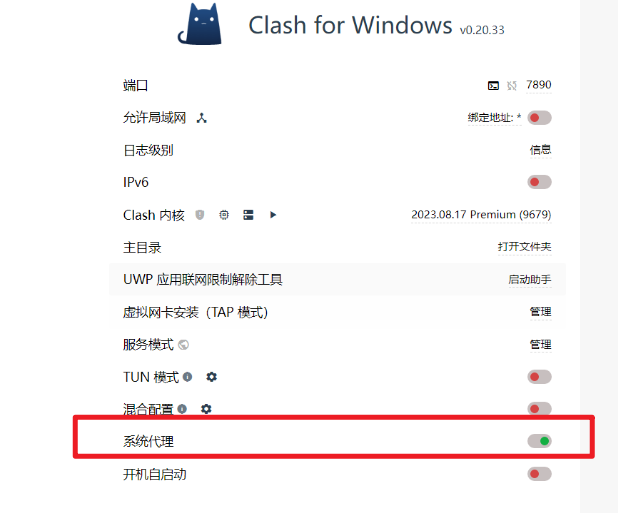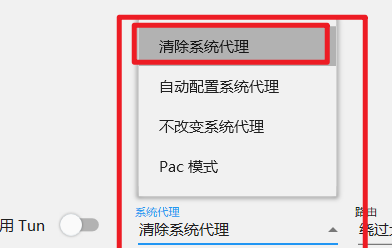彻底解决 Gradio Client 的 Could not fetch config from http://127.0.0.1:7860 经典错误
在使用 pyVideoTrans 软件或代码调用 Gradio 应用时,是否经常面临一行冰冷的红色错误?

gradio_client.exceptions.ConnectionError: Could not fetch config from http://127.0.0.1:7860.
别担心,你不是一个人。这是一个在使用 gradio_client 时最常见的“拦路虎”。这篇指南将带你从基础排查到揭开“幕后黑手”,彻底征服这个错误。
错误的核心:它在说什么?
这行错误信息的字面意思是:“无法从 http://127.0.0.1:7860 获取配置信息”。
简单来说,你的客户端程序像一个信使,它需要先去服务器(Server)的地址拿到一张“菜单”(即应用的配置信息,比如有哪些API、输入输出是什么),然后才能开始点菜(提交数据)。而这个错误就意味着,你的信使连服务器的大门都没进去,更别说拿菜单了。
问题的根源 99% 不在于 gradio_client 本身,而在于 客户端和服务器之间的网络通信被阻断了。
Part 1: 基础排查清单(解决80%的问题)
在深入探索之前,我们先完成一套标准化的检查动作,这能解决绝大多数情况。
第1步:你的 Gradio 服务器真的在运行吗?
这是最常见、也最容易被忽略的原因。
检查方法:
- 看终端: 查看你启动 Gradio 应用(例如运行
python app.py)的那个终端窗口,它是否还在运行?有没有报错退出?一个正常运行的服务器会显示:Running on local URL: http://127.0.0.1:7860

- 用浏览器测试: 这是最关键的测试!直接在你的浏览器中打开服务器显示的地址
http://127.0.0.1:7860。- 如果能看到 Gradio 界面:恭喜,服务器是健康的!问题在别处,请继续往下看。
- 如果浏览器显示“无法访问”或“连接被拒绝”:说明服务器根本没启动成功。请先去修复你的服务器代码,让它能正常运行。

- 看终端: 查看你启动 Gradio 应用(例如运行
第2步:地址和端口完全匹配吗?
确保你的信使没有跑错地址。
检查方法:
- 服务器端:检查你
app.launch()的参数。如果你写了app.launch(server_port=8000),那么地址就是http://127.0.0.1:8000。 - 客户端:确保
Client()中的 URL 和服务器启动时显示的 URL 一模一样。
python# 服务器在 7860 端口 # app.launch() # 客户端必须连接 7860 from gradio_client import Client client = Client("http://127.0.0.1:7860/") # 正确 # client = Client("http://localhost:7860/") # 也正确 # client = Client("http://127.0.0.1:5010/") # 错误!- 服务器端:检查你
第3步(特殊情况):你在用 Docker 或虚拟机吗?
在 Docker 容器里运行 Gradio 服务器是一个常见的坑。
- 原理: Docker 容器有自己的网络,容器内的
127.0.0.1指的是容器自己,而不是你的电脑。 - 解决方案:
- 服务器端:必须监听
0.0.0.0,以接收来自容器外部的连接。pythonapp.launch(server_name="0.0.0.0", server_port=7860) - 启动容器时:必须用
-p参数将容器端口映射到电脑端口。bash# 将你电脑的 7860 端口映射到容器的 7860 端口 docker run -p 7860:7860 your_gradio_image - 客户端:连接你电脑的地址
http://127.0.0.1:7860即可。
- 服务器端:必须监听
虚拟机也是同样道理
Part 2: 揭开“幕后黑手”——那个你没想到的网络代理(VPN软件)
如果你完成了以上所有检查,问题依旧,那么很可能你遇到了和我一样的“元凶”。
最终发现:问题出在运行中的 VPN 或网络代理软件(如 Clash、V2Ray 等)!
为什么代理软件会干扰本地连接?
当你开启代理软件的 “系统代理” 或 “全局模式” 时,它会接管你电脑上所有的网络请求,包括那些发往 127.0.0.1(本机)的请求。
这个请求的旅程本应是: [你的客户端脚本] -> [你的操作系统] -> [你的 Gradio 服务器脚本] (瞬间完成)
但开启系统代理后,它变成了: [你的客户端脚本] -> [你的操作系统] -> [**代理软件**] -> ???
代理软件收到一个指向本机的请求后,可能会感到“困惑”。它的主要任务是把流量转发到远程服务器,因此它可能错误地处理这个本地请求,导致其被丢弃或迷路,永远也到不了在本机监听的 Gradio 服务器那里。
这就是为什么你在浏览器里能打开,但 gradio_client 却失败了! 浏览器可能有自己的代理规则或插件绕过了本地地址,而 Python 的网络请求却被代理软件结结实实地拦截了。
Part 3: 最佳实践:无需关闭代理,优雅地解决问题
每次都关闭代理软件太麻烦了。幸运的是,我们有更好的方法。
方案一:设置代理规则绕过本地地址(强烈推荐)
这是“一劳永逸”的方法。你需要告诉你的代理软件:“请放过所有访问本地的流量”。
在你的代理软件(如 Clash)的配置文件中,找到规则部分,添加针对本地地址的直连(DIRECT)规则,并确保它在规则列表的靠前位置。
例如,在 Clash 的 config.yaml 中添加:
rules:
# ... 其他规则 ...
- DOMAIN,localhost,DIRECT
- IP-CIDR,127.0.0.0/8,DIRECT
# ... 其他规则 ...保存并重载配置后,问题就解决了。你的代理软件会智能地放行本地流量,同时继续代理其他网络请求。
方案二:在代理软件中取消系统代理选项
如图clash中取消它

v2ray中清除系统代理

方案三:使用 NO_PROXY 环境变量(临时方案)
如果你只是想临时运行一下脚本,可以在运行时设置一个环境变量,告诉本次运行的程序不要使用代理。
- Linux / macOS:bash
export NO_PROXY="localhost,127.0.0.1" python your_client_script.py - Windows (CMD):cmd
set NO_PROXY=localhost,127.0.0.1 python your_client_script.py - Windows (PowerShell):powershell
$env:NO_PROXY="localhost,127.0.0.1" python your_client_script.py
总结:终极排错清单
当你再次遇到 Could not fetch config 时,请按以下顺序检查,效率最高:
- ✅ 【首要检查】 我是否开启了任何 VPN 或网络代理的 系统代理模式?尝试关闭它或设置本地直连规则。
- ✅ 【浏览器测试】 在浏览器中能否打开
http://127.0.0.1:7860?(确认服务器是否存活) - ✅ 【核对地址】
Client()中的 URL 和服务器启动时显示的 URL 是否完全一致? - ✅ 【检查环境】 如果使用 Docker,是否已配置
server_name="0.0.0.0"和端口映射-p? - ✅ 【检查防火墙】 系统防火墙或杀毒软件是否阻止了 Python 的网络连接?
希望这篇详尽的指南能帮你扫清障碍,让你和 gradio_client 的旅程从此一帆风顺!
